The post How is the deep sea so diverse? The struggle is real for late 1900s ecologists first appeared on Deep Sea News.
]]>
Prior to 1967, the environmental extremes of the deep were thought to limit life. The deep sea is dark (can’t-see-your-hand-in-front-of-your-face dark), cold (only-four-degrees-above-freezing cold), and under an extreme amount of pressure (one-elephant-on-each-square-inch-of-your-body pressure). This suite of factors should make survival challenging, and thus for a century, scientists assumed the deep sea was biologically a desolate wasteland. Even after the discoveries of animals living at extreme depths in the late 1800s, Victorian scientists expected that there could not be a diverse array of animals surviving in the deep sea. Enter Robert Hessler and Howard Sanders who in 1967 used newly developed sampling devices to discover that the deep sea is shockingly diverse, and perhaps just as diverse as tropical shallow-water habitats.
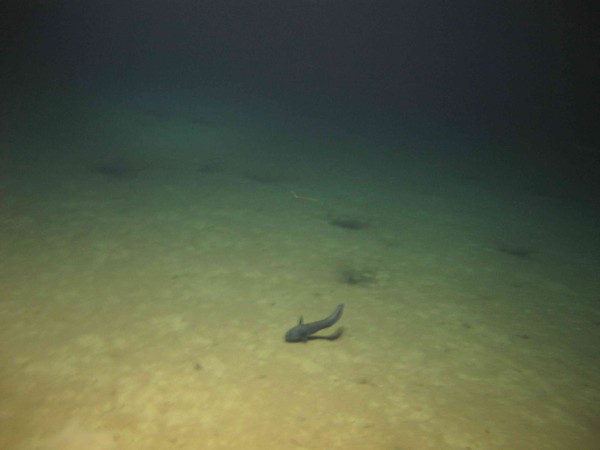
Scientists were completely baffled as to how high diversity could occur in such a bleak place. They began to throw out theories, but they were limited by the little data that had been gathered from a poorly explored deep ocean. The scientific publications of this time on deep-sea diversity read like there were a few people in a room with a whiteboard, writing everything they remember from their ecological textbooks, talking through each theory, slowly crossing off possibilities, and working their way down the list.

Howard Sanders began by writing “Specialization” on the whiteboard with his paper introducing the Stability-Time Hypothesis in 1968. He suggested that because the deep sea is monotonous and predictable (i.e., it is stable), populations have the evolutionary time to become newly specialized in how they feed. Over time, these populations become so specialized they evolve into totally new species, eventually driving diversity up. Further research and explorations indicated that the premise of this argument was wrong- the deep sea is actually not that stable.
Then, Paul Dayton and Robert Hessler walked up to the board and scratched off the “Specialization” idea with their paper in 1972 entitled “The role of biological disturbance in maintaining diversity in the deep sea.” The pair do not argue against the idea that the deep sea is predictable and stable. In fact, they favor the idea… except for the part where they proved that deep-sea species are actually not more specialized than shallow water species.
“Specialization” got a strikethrough on the whiteboard, and Dayton and Hessler wrote “Predation” below it. The duo introduced a specific type of predation pressure they labelled “biological cropping.” No, biological cropping is not deep-sea animals learning agricultural techniques… but a combination of predation and deposit feeding. Animals can eat other animals either intentionally (e.g. hunting down prey) or unintentionally (e.g. stuffing everything you come across into your mouth and it just so happens that you get a live one). This “cropping,” whether accidental or not, reduces competition by preventing one or a few abundant species from monopolizing the resource. These species get knocked out, allowing far more species to get a piece of the proverbial pie. Nobody gets sent into extinction by competition. Dayton and Hessler’s idea is not necessarily that diversity is driven to be high in the deep sea, just that it is not limited.
Dayton and Hessler’s “Predation” idea never got fully scratched off the list, but the difficulty of testing the idea and conflicting results have led many to write large question marks next to it. Many other ideas now are situated below “Predation,” including: “Disturbance,” “Patchiness,” and “Successional Dynamics.”
Ultimately, those of us in the deep-sea scientific community are still today standing around the dry erase board bouncing many of these same ideas off each other. Sometimes we manage to cross one off the list, or add one, or at least add to our understanding of the ideas. One thing is clear though, we still haven’t gotten it all figured out. So… anyone have a dry erase marker?
The post How is the deep sea so diverse? The struggle is real for late 1900s ecologists first appeared on Deep Sea News.
]]>The post Top 10 GIFs of Ocean Animals Eating Other Animals first appeared on Deep Sea News.
]]>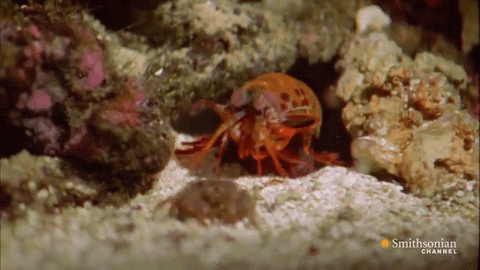
7. Stingray eating a crab
9. Deep-sea crab eating a Giant Isopod
The post Top 10 GIFs of Ocean Animals Eating Other Animals first appeared on Deep Sea News.
]]>The post The real Alien vs. Predator is occurring right now in Antarctic waters first appeared on Deep Sea News.
]]>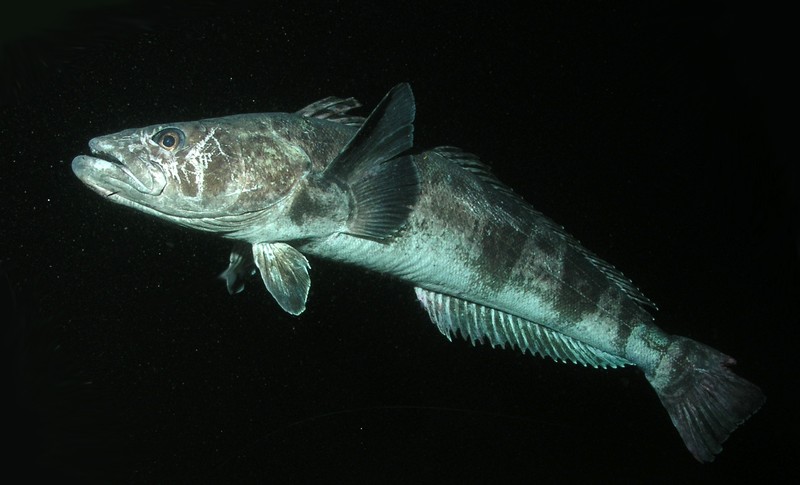 In the freezing and dark waters of the Antarctic, two marine species are pitted against each other in a battle of survival. Each of the players in the evolutionary game is trying to avoid a permanent residency in the other’s stomach. One of the competitors, you may not be surprised by. The behemoth colossal squid can reach sizes of sizes of 495 kg (1091 lbs) and 4.2 meters (13.8 feet). The colossal squid’s competitor? The Antarctic toothfish reaching a puny 200 cm (6.5 feet) and 80 kg (176 pounds) in length at is biggest. Not exactly the size to take on the hooked tentacular mass of a colossal squid. Yet attacks and feedings of this two biological killing machines on each other occurs frequently in the natural world’s answer to Alien vs. Predator.
In the freezing and dark waters of the Antarctic, two marine species are pitted against each other in a battle of survival. Each of the players in the evolutionary game is trying to avoid a permanent residency in the other’s stomach. One of the competitors, you may not be surprised by. The behemoth colossal squid can reach sizes of sizes of 495 kg (1091 lbs) and 4.2 meters (13.8 feet). The colossal squid’s competitor? The Antarctic toothfish reaching a puny 200 cm (6.5 feet) and 80 kg (176 pounds) in length at is biggest. Not exactly the size to take on the hooked tentacular mass of a colossal squid. Yet attacks and feedings of this two biological killing machines on each other occurs frequently in the natural world’s answer to Alien vs. Predator.
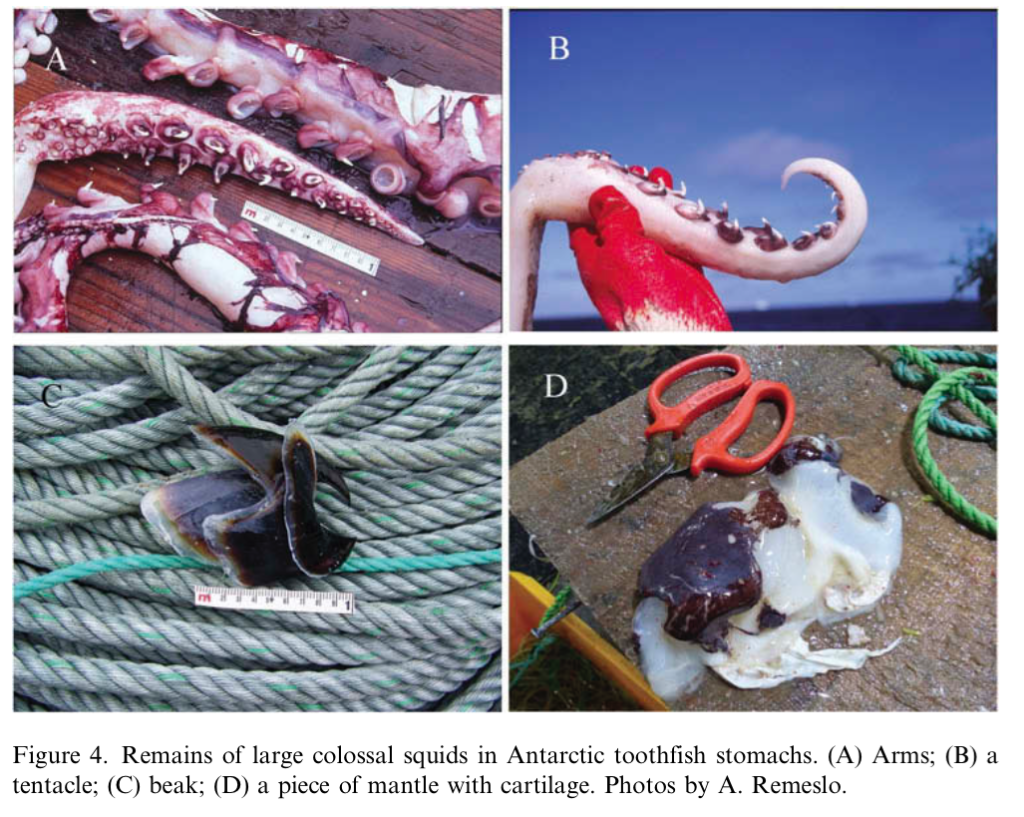 Remeslo and colleagues*** report 71 toothfish with deep wounds from squid beaks or scratches from suckers. Remains of colossal squids were found in the stomachs of 57 toothfish. The researchers estimated the size of colossal squids ranged in size from 1.2 to 2.4 meters (3.9-7.9 ft) and measured lengths of toothfish from 1.2 to 1.95 meters (3.9-6.4 ft). When the battle between the two is at its maximum, the sizes of the two species were comparable.
Remeslo and colleagues*** report 71 toothfish with deep wounds from squid beaks or scratches from suckers. Remains of colossal squids were found in the stomachs of 57 toothfish. The researchers estimated the size of colossal squids ranged in size from 1.2 to 2.4 meters (3.9-7.9 ft) and measured lengths of toothfish from 1.2 to 1.95 meters (3.9-6.4 ft). When the battle between the two is at its maximum, the sizes of the two species were comparable.
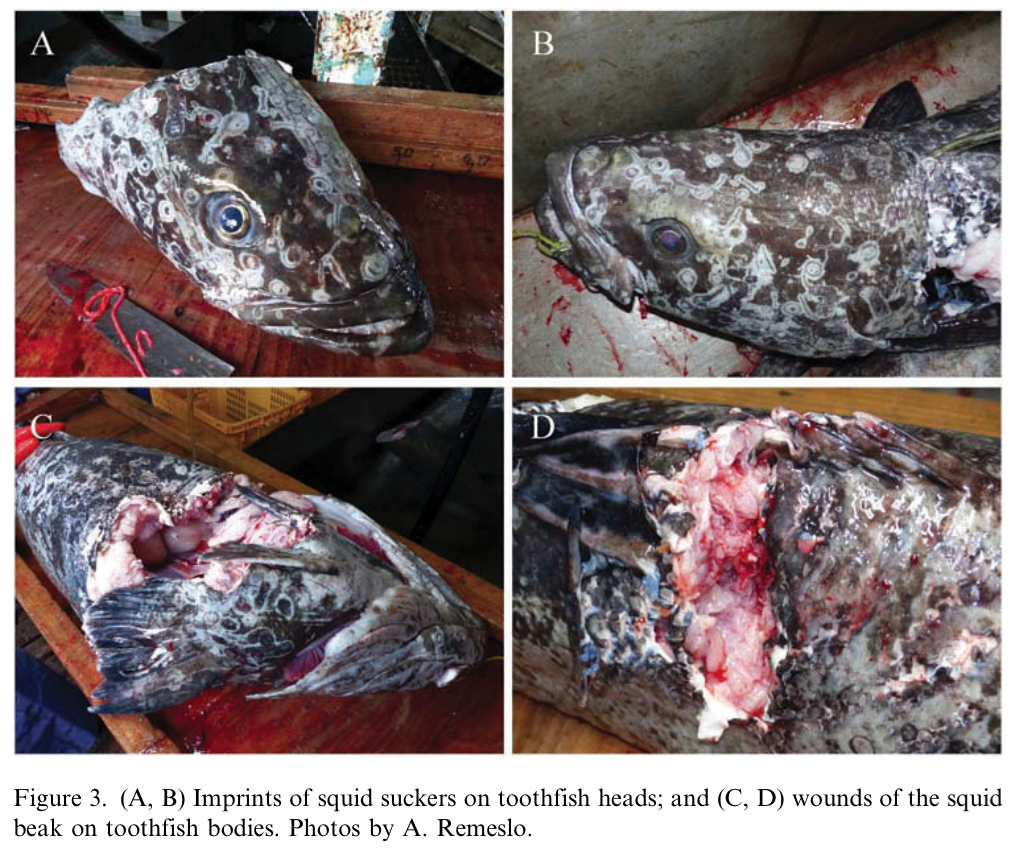 Antarctic toothfish as a predator turned out to be slightly larger (1.52 m, 4.99 ft) than when prey (1.48 m, 4.86 ft). Remelso report on one impressive finding in the stomach of a toothfish measuring 1.85 m (6.07 ft) long and 70 kg in weight. The stomach contents included a tentacle with two attached arms. The length of the tentacle was 2.42 m (7.94 ft) and the arms were 1.27 m (4.17 ft) and 1.14 m (3.74 ft).
Antarctic toothfish as a predator turned out to be slightly larger (1.52 m, 4.99 ft) than when prey (1.48 m, 4.86 ft). Remelso report on one impressive finding in the stomach of a toothfish measuring 1.85 m (6.07 ft) long and 70 kg in weight. The stomach contents included a tentacle with two attached arms. The length of the tentacle was 2.42 m (7.94 ft) and the arms were 1.27 m (4.17 ft) and 1.14 m (3.74 ft).
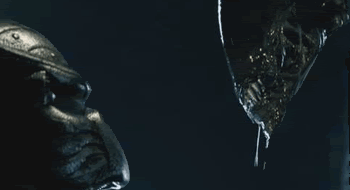 So how are Antarctic tootfish feeding on colossal squids? Their wimpy teeth are insufficient to rip the arms off a large squid. As Remelso explains, “One of the possible explanations for toothfish foraging on squids larger than themselves is that [toothfish] attacks dead and possibly dying [colossal squids]. This supposition might be inferred also from the diet of a bottom scavenger and ambush predator – the Antarctic sleeper shark Somniosus antarcticus – in which colossal squid occurred in 66.1% of stomachs and represented 52% of cephalopod prey (by weight) around the Kerguelen Islands.
So how are Antarctic tootfish feeding on colossal squids? Their wimpy teeth are insufficient to rip the arms off a large squid. As Remelso explains, “One of the possible explanations for toothfish foraging on squids larger than themselves is that [toothfish] attacks dead and possibly dying [colossal squids]. This supposition might be inferred also from the diet of a bottom scavenger and ambush predator – the Antarctic sleeper shark Somniosus antarcticus – in which colossal squid occurred in 66.1% of stomachs and represented 52% of cephalopod prey (by weight) around the Kerguelen Islands.
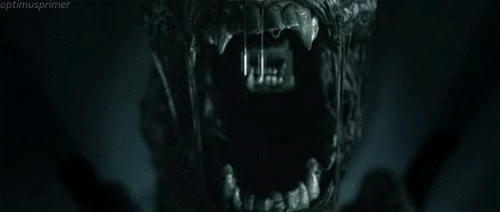 Or maybe they could try the flushing the toilet when colossal squids shower.
Or maybe they could try the flushing the toilet when colossal squids shower.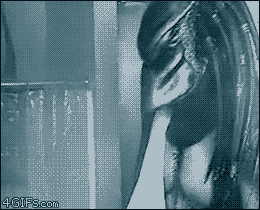
***Bonus points to the authors for the title
A.V. Remeslo, M.R. Yakushev & V. Laptikhovsky (2015): Alien vs. Predator: interactions between the colossal squid (Mesonychoteuthis hamiltoni) and the Antarctic toothfish (Dissostichus mawsoni), Journal of Natural History, DOI: 10.1080/00222933.2015.1040477
The post The real Alien vs. Predator is occurring right now in Antarctic waters first appeared on Deep Sea News.
]]>The post Squid Rocket Science first appeared on Deep Sea News.
]]>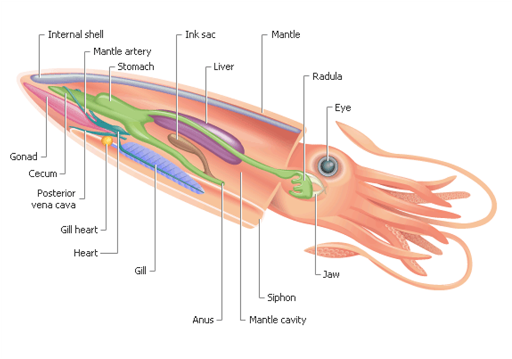 Squid attain some of their most dramatic speeds and accelerations during escape responses, known as escape jetting. This occurs by water jet propulsion. The main body of the squid, referred to as the mantle, is highly muscular. Indeed, squids are essentially free-living muscles! Squids take water into their body cavity and by contracting the muscle can quickly and forcibly expel it through the tubular siphon. A squid as the ability to control the direction of this siphon much like the jet engines on a Harrier Jet. This same jetting can propel a squid out of the water (see above photo).The squid initiates aerial flights by forcefully ejecting water from the mantle. This behavior underwater is seen as jet propulsion because the mantle can refill with water. Above the water, however the mantle cannot refill with an aqueous propellant. “So their launch into air is technically rocket propulsion.“ state O’Dor and coauthors.
Squid attain some of their most dramatic speeds and accelerations during escape responses, known as escape jetting. This occurs by water jet propulsion. The main body of the squid, referred to as the mantle, is highly muscular. Indeed, squids are essentially free-living muscles! Squids take water into their body cavity and by contracting the muscle can quickly and forcibly expel it through the tubular siphon. A squid as the ability to control the direction of this siphon much like the jet engines on a Harrier Jet. This same jetting can propel a squid out of the water (see above photo).The squid initiates aerial flights by forcefully ejecting water from the mantle. This behavior underwater is seen as jet propulsion because the mantle can refill with water. Above the water, however the mantle cannot refill with an aqueous propellant. “So their launch into air is technically rocket propulsion.“ state O’Dor and coauthors.
In once case, the Orangeback Flying Squid, less than 2.4 inches in length, is able to fly under squid rocket power for 3.5 feet. This distance is nearly 18 times its body length. This is equivalent of me launching my body more than the entire distance of a regulation basketball court. But the flight doesn’t stop there. These squids can continue to glide and soar like an eagle to the point of holding their arms to form a fin shape. In flight they can reach speeds of 5.3 miles/hour, about the pace of leisurely run or jog.
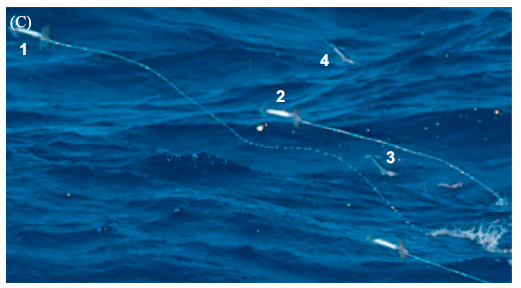
O’Dor and colleagues suggest these flights are not by accident. “WTF how did I get here? OMG CAN’T BREATHE!” From photographic evidence, the behavior, posture, and color of the squid change just before the launch.
So why do squids want to be rockets?
1. Who wouldn’t want to be a rocket? Why be an astronaut when you can be a rocket?
2. To take to the aerial escape from predators not so gifted with the power of flight.
3. Because flight is easier than swimming! The lower drag of a rocket squid in air versus water means that reduces the cost of transports by a 20%. The costs could even be lower if squids are actively flapping their fins as well. How do we test this? “Getting squid to fly in a wind tunnel seems more problematic, but perhaps not impossible.” For Science!
Ron O’Dor, Julia Stewart, William Gilly, John Payne, Teresa Cerveira Borges, Tierney Thys “Squid rocket science: How squid launch into air.” Deep Sea Research Part II: Topical Studies in Oceanography, Volume 95, 15 October 2013, Pages 113–118
http://dx.doi.org/10.1016/j.dsr2.2012.07.002
*crediting Ron O’Dor et al for this wonderful and simply elegant sentence
The post Squid Rocket Science first appeared on Deep Sea News.
]]>The post Can’t Touch This first appeared on Deep Sea News.
]]>
cutest picture ever taken. Source: NatGeo
Another epic post from Alex Warneke, aka lil’ A
Disposable nudibranch penises are all the rage this month thanks to a study published in the Royal Society’s journal Biology Letters. Undoubtedly a unique skill in the animal kingdom, there is just something about the phrase “detachable penis” that screams ecological epicness.
Despite this extraordinary ability however, these charismatic microfauna reign supreme in my book for a very different reason. You see at the nudi(st) colony they dance to one song and one song only…

Sea slugs may have got the short end of the evolutionary stick with the loss of their protective outer shells, but they don’t let it get them down (a.k.a. eaten). Instead they put on their “hammer pants” and bust out other defensive means of protecting their soft, squishy bodies from hungry predators.
Certain species, like Berthella californica, defend themselves by dropping acid. No, these little buddies are not on psychedelic drugs looking to jump down the rabbit hole. When provoked however, they do have the ability to produce sulfuric and hydrochloric acids from small pouches called vesicles in their skin. Just to put that into perspective, hydrochloric acid is highly corrosive with a pH of roughly 1-2 and is the same acid found in your stomach to dissolve food. Needless to say, predators “Ain’t Touchin’ This” anytime soon.
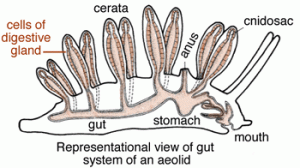
Moving on to other distasteful denizens of the deep, some sea slugs are down right thieves and steal their defenses from their food. Rude…but awesome. Whether they are eating jellies, sea anemones, hydroids, etc. these guys can take the defensive powers of that which they are eating and use them as their own!
How does this work? Well, if you have ever been frolicking in the intertidal-hood like I have and stuck your finger in an unexpecting sea anemone…like I have…you might have been subject to their sticky tentacles. While you might think this is all in good fun, they are actually trying to kill you with their harpoon-like nematocysts (hence, the stickiness). Now, like us, some sea slugs are also immune to these homicidal anemones. Not only that, but they can ingest these nematocysts without them discharging and place them in their feathery cerata, or their “business end” as I like to call it. When a predator then tries to chow down on the seemingly easy sea slug snack, they find themselves with a mouthful of harpoons and a lunch that is relatively hard to swallow.
You may recall Miriam’s post on the wild blue pokemon-esque Glaucus atlanticus. These misunderstood sea beasties are a perfect example of this type of mechanical defense.

Finally, there are other groups of nudibranchs, like the Dorids, that somewhat live in the best of both worlds. Their diets consist of sponges with biologically active compounds, called secondary metabolites, which can also deter predators. (Interesting side note: These can be similar to the compounds that are taken from sponges and used in pharmaceutical drugs.) In some instances, these slugs can even synthesis these chemicals on their own without deriving them from their food, like the acids in our first example.
With all of these cool ninja defenses to work with, how are predators expected to know they just “Can’t Touch This.” One hypothesis is that, similar to poisonous dart frogs and other more noxious beasties, these sea slugs have developed Aposematic Coloration. In other words, these little buddies maintain bright, conspicuous color patterns to warn their potential predators to Stop. It’s Hammer Time.

References
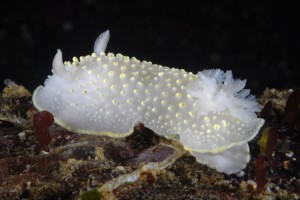
Faulkner, D.J. and Ghiselin, M.T. Chemical defense and evolutionary ecology of dorid nudibranchs and some other opisthobranch gastropods. Marine Ecology Progress Series 13 (1983): 295-301.
Long, J.D. and Hay, M.E. Fishes learn aversions to a nudibranch’s chemical defense. Marine Ecology Progress Series 307 (2006): 199-208.
Marin, A. Chemical or nematocyst-based defense in the nudibranch Cratena peregrine?- a reply to B.K. Penney. Journal of Molluscan Studies 75 (2009): 201-202.
Nudibranchs and Relatives: Defenses http://www.asnailsodyssey.com/LEARNABOUT/NUDIBRANCH/nudiNema.php
Thompson, T.E. Biology of Opisthobranch molluscs (Volume I). 1976. The Ray Society. Cromwell, London.
The post Can’t Touch This first appeared on Deep Sea News.
]]>The post Cloaking Klingon Cephalopods first appeared on Deep Sea News.
]]>The Klingon Bird of Preys were first introduced in Star Trek III: The Search for Spock. Two classes existed, the B’rel-class and the K’Vort-class, roughly scout and light cruiser classes. They were formidable ships, not only because of their lovable Klingon crews, forward torpedo launchers, and disruptor cannons, but because of their cloaking abilities*. Moving from the dark depths to the twilight zone** any animal with cloaking abilities would rule the ocean. Well maybe they wouldn’t’ be like ocean royalty but they would do alright.

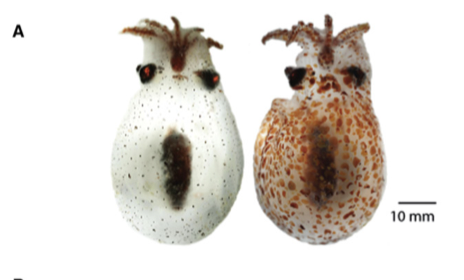 Nearly every group of animals has a transparent brethren that lives in the well-lit open ocean. In darker deeper water, a majority of denizens are red or black. In both cases, this coloration or lack of serve to cloak the animal. But what’s an animal to do if they are in between these zones, not a sharp boundary but a grey area full of scoundrels or needs to migrate between the two. A red or black creature in ligher shallower waters easily contrasts against the light coming from above. A transparent animal, finding itself in the deep, would be easily distinguishable from the direct light cast from another organism’s bioluminescence. If only like a Bird of Prey an organism could shift between cloaking and no cloaking.
Nearly every group of animals has a transparent brethren that lives in the well-lit open ocean. In darker deeper water, a majority of denizens are red or black. In both cases, this coloration or lack of serve to cloak the animal. But what’s an animal to do if they are in between these zones, not a sharp boundary but a grey area full of scoundrels or needs to migrate between the two. A red or black creature in ligher shallower waters easily contrasts against the light coming from above. A transparent animal, finding itself in the deep, would be easily distinguishable from the direct light cast from another organism’s bioluminescence. If only like a Bird of Prey an organism could shift between cloaking and no cloaking.
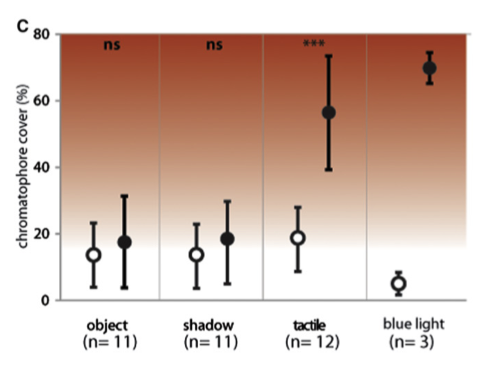
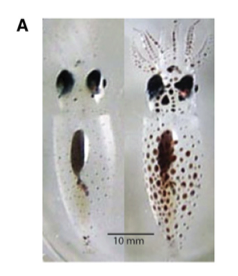 Two such creatures the octopus Japetella heathi (right) and the squid Onychoteuthis banksii (left) can do exactly this. When you shine a direct light on the normally transparent Japetella heathi or Onychoteuthis banksii, mimicking a bioluminescent beam, its chromatophores are triggered turning the animal opaque. But the octopus, like a crafty Klingon, is strategic in triggering the chromatophore response. Objects or shadows near the octopus did not trigger a response. Yet tactile, i.e. poking it with a probe, a big stick, or whatever is nearby, or blue light did activate the cloaking device.
Two such creatures the octopus Japetella heathi (right) and the squid Onychoteuthis banksii (left) can do exactly this. When you shine a direct light on the normally transparent Japetella heathi or Onychoteuthis banksii, mimicking a bioluminescent beam, its chromatophores are triggered turning the animal opaque. But the octopus, like a crafty Klingon, is strategic in triggering the chromatophore response. Objects or shadows near the octopus did not trigger a response. Yet tactile, i.e. poking it with a probe, a big stick, or whatever is nearby, or blue light did activate the cloaking device.
Both animals consistently reflected 2x as much light when in the transparent mode compared with the pigmented mode. Indeed in the cloaked state, the octopus was able to achieve the same reflectance of the red and black fishes and invertebrates of the deep.
These cephalopods seem to understand the ancient Klingon proverb tugh qoH nachDaj je chevlu’ta’ or A fool and his head are soon parted. Best be no fool and cloak often***.
Sarah Zylinski, Sönke Johnsen (2011) Mesopelagic Cephalopods Switch between Transparency and Pigmentation to Optimize Camouflage in the Deep. Current Biology Vol. 21, Issue 22, pp. 1937-1941)
*I would also note that early Klingon Bird of Preys also had sweet submarine style periscopes
**I’m not referring to young emo vampires either although maybe cloaking is useful agains them as well
***not really related to this post but I feel compelled to say KKKKKKKHHHHHHAAAAAANNNNNN!!!!!!!
The post Cloaking Klingon Cephalopods first appeared on Deep Sea News.
]]>The post Watch helplessly from a mussel’s shell as it is slowly & inexorably consumed first appeared on Deep Sea News.
]]>Echinoderms: Sea Star Time-lapse: Eating Mussel from Shape of Life on Vimeo.
The post Watch helplessly from a mussel’s shell as it is slowly & inexorably consumed first appeared on Deep Sea News.
]]>The post With a snail’s help a fish transitions from dying to dead first appeared on Deep Sea News.
]]>A tragic event has befallen a rattail fish at 1,100 meters. The fish is alive, barely, and visibly quivering. Not able to swim any longer it falls to seafloor, continuing to tremble, and slowly dies for another hour.
 When the fish first arrives to the seafloor, whelks are rare. However the chemical cue of the dying fish soon lures the snails from afar. During the first hour only two were present. Within four hours, moving slowly (a meter an hour) as they creep along the muddy seafloor, 78 whelks swarm the fish. The whelks are here to speed up the fish’s death. The hungry scavenging snails, cannot wait for pleasantries, like a fish dying before they consume it. There is no predicting when the next food fall will arrive to their part of the seafloor.
When the fish first arrives to the seafloor, whelks are rare. However the chemical cue of the dying fish soon lures the snails from afar. During the first hour only two were present. Within four hours, moving slowly (a meter an hour) as they creep along the muddy seafloor, 78 whelks swarm the fish. The whelks are here to speed up the fish’s death. The hungry scavenging snails, cannot wait for pleasantries, like a fish dying before they consume it. There is no predicting when the next food fall will arrive to their part of the seafloor.
 Within eight hours, the fish transitions from dying to dead, not taken by the original calamity but by a pack of flesh hungry snails. In the abyss, a dwindling life begets continued life even if the path is not attractive.
Within eight hours, the fish transitions from dying to dead, not taken by the original calamity but by a pack of flesh hungry snails. In the abyss, a dwindling life begets continued life even if the path is not attractive.
Based on Aguzzi J, Jamieson AJ, Fujii T, Sbragaglia V, Costa C, Menesatti P, Fujiwara Y (2012) Shifting feeding behaviour of deep-sea buccinid gastropods at natural and simulated food falls. Mar Ecol Prog Ser 458:247-253
The post With a snail’s help a fish transitions from dying to dead first appeared on Deep Sea News.
]]>The post Coordinated Hunting in Red Devils first appeared on Deep Sea News.
]]>Luckily those aggregations are random at best and behaviors aren’t coordinated…
This just in…the nocturnal foraging behavior of Humboldt Squids is coordinated.
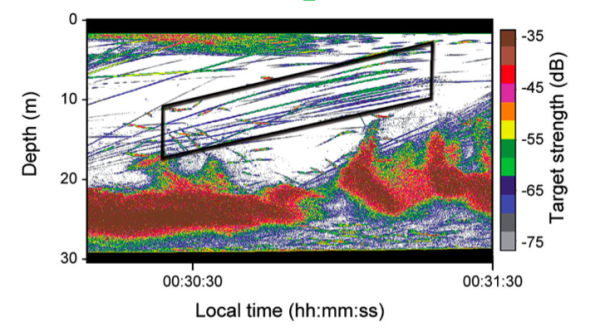
Between 2007 and 2011, Kelly Benoit-Bird and William Gilly tracked both schools and individuals of Dosidicus gigas with sonar in the Gulf of California with some startling findings. Two types of aggregations were seen: extremely dense groups in which individual squid could not be acoustically detected and loose but coordinated groups of followed parallel paths.

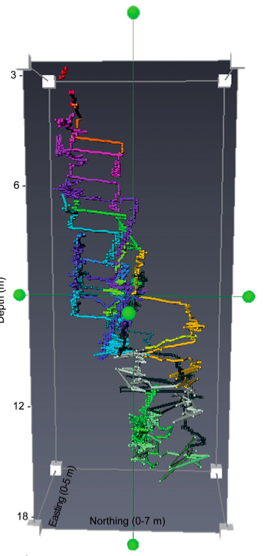
At night, individual and groups of up to 40 Humboldt Squid swam spirally upward at ~5 miles per hour from a school likely to prey upon fish. Benoit-Bird and Gilly documented 103, 763 occurrences of this swim pattern. Upon reaching one of the vertices of the spiral, individual squids would swim back and forth repetitively before continuing spiraling upward.
Movement in subgroups of squids were both coordinated in horizontally and vertically, i.e. depth, in the water column. As noted by the authors, “The resulting groups of tracks look like interwoven multiple helices anchored at their vertices by bouts of presumed feeding.” Individual squids in the subgroups would swim a very similar spiral pattern but would spaces themselves out vertically and regularly. Adjacent squids maintained at least a distance of ~10 inches and on average ~3 feet.
Interestingly, the greater the size difference between two squid the greater the distance between them. Why? It’s likely high levels of cannibalism, with smaller individuals being more prone to cannibalism by larger ones, helps squids remember to keep their distance.
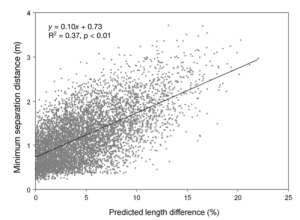
I take more comfort not less in knowing that Diablo Rojo coordinate schooling efforts. This implies some level of intelligence that may allow me to negotiate with them for my life before one of them consumes my brains. O’ wait that’s zombies…damn.
The post Coordinated Hunting in Red Devils first appeared on Deep Sea News.
]]>The post What’s In Your Stomach? first appeared on Deep Sea News.
]]> With Mardi Gras recently passing, I was privileged to partake of a King Cake graciously offered by a coworker. Originally European in tradition, the riche brioche-style cake is now also popular along the Gulf coast. King Cakes are recognizable from nearly 3 miles away by the patches of green, purple, and gold sugar that top a layer of icing. Although I am a purist and prefer plain, the cake maybe filled with cream cheese, praline, strawberry goo, or any number of unpleasant concoctions. The real surprise inside is a small trinket in the form of tiny plastic baby representing the baby Jesus. The person who receives the slice of King Cake with the tiny baby Jesus is King or Queen of the day and bestowed numerous benefits. Chief responsibility for the new royalty is supplying the next King Cake. The sight of a King Cake invokes two responses from me. One is daydreaming of my days spent in New Orleans with warm springs, Mardi Gras, Abita beer, and turducken. Second is a morbid fear of accidentally swallowing the tiny baby Jesus. Luckily, I survived another year without lodging a plastic Christ in my throat.
With Mardi Gras recently passing, I was privileged to partake of a King Cake graciously offered by a coworker. Originally European in tradition, the riche brioche-style cake is now also popular along the Gulf coast. King Cakes are recognizable from nearly 3 miles away by the patches of green, purple, and gold sugar that top a layer of icing. Although I am a purist and prefer plain, the cake maybe filled with cream cheese, praline, strawberry goo, or any number of unpleasant concoctions. The real surprise inside is a small trinket in the form of tiny plastic baby representing the baby Jesus. The person who receives the slice of King Cake with the tiny baby Jesus is King or Queen of the day and bestowed numerous benefits. Chief responsibility for the new royalty is supplying the next King Cake. The sight of a King Cake invokes two responses from me. One is daydreaming of my days spent in New Orleans with warm springs, Mardi Gras, Abita beer, and turducken. Second is a morbid fear of accidentally swallowing the tiny baby Jesus. Luckily, I survived another year without lodging a plastic Christ in my throat.

Accidental swallowing can also occur in the animal kingdom. During 1979-1981, William Dolphin* and Daniel McSweeny were observing eating behavior of humpback whales in Fredrick Sound, Alaska. At around 3:30 in the afternoon, one of the humpbacks defecated on the surface. William and Daniel being great scientists took scat samples. Among the scat and to no surprise was found numerous exoskeletons of krill, one of the primary food sources of humpbacks besides small fish. However, two unique items for a humpback diet were also found among the scat.
Also included were the remains of two birds, identified by general size and bill shape as Cassin’s Auklets. Feathers were largely lacking and the eyes were missing but otherwise the epidermis was intact and exhibited only superficial signs of digestion.
The auklets’ stomachs also contained krill. So how did nature construct this version of turducken (krill inside an auklet inside a humpback, krillhumplet)? Likely the auklets were accidently ingested by the humpbacks as both the birds and whales were feeding on the krill swarm. William and Daniel estimates indicate more than 150 whales and 2,500 birds were feeding on the same krill swarm at the time. As Dolphin and McSweeny end their scientific paper “For the auklets this was simply a case of being in the wrong place at the wrong time.”
Of course this pales in comparison to the checklist of items found in the stomach of tiger sharks.
rubber tire, roll of tar paper, roll of chicken wire, bag of potatoes, sack of coal, rags, paper, aluminum foil, beer bottles, burlap sacs, chicken coop [what?], plastic bags, aluminum soft-drink cans, nails, nuts and bolts, 2-pound (1 kilogram) coil of copper wire, small barrels, old pants, overcoats, raincoat, pair of shoes, boots, empty wallet, bag of money (was this off Jersey?), finger ring, driver’s licence, driftwood, pieces of coal, mass of tangled hair, explosives, brass casing from an 18-pound (8 kilogram) shell, tools, leather, fabrics, boat cushions, unopened tin of salmon, 2-pound (1 kilogram) can of peas, cigarette tin, tom-tom, oral contraceptive dispenser, oceanographic drift marker, steak bone, seeds, nuts, grass, jellyfish, conch shells and opercula, horseshoe crabs, tunicates, head and forequarters of a crocodile [shark vs. crocodile!], chickens, pelicans, seagulls, rats, black cat, spaniel with collar, pigs, pig parts, hind legs of sheep, cattle bones and hooves [including a full head], deer antlers, horse parts [including a full head], donkey parts, hyenas, monkeys, and [rarely] human remains.
The tiger shark is so badass it often consumes landbirds like the Yellow-billed Cuckoo, Bahama Yellowthroat, Morning Dove, and Woodthrushes. These likely represent opportunistic feedings on on unsuccessful bird migration attempts over water.
So what does this tell us? First, tiger sharks are badass and deserving of spot on the 10 species every man should love list. Second, humans have done a phenomenal job of polluting the ocean. Seriously a chicken coop, a tire, and explosive? Third and most importantly, is the peculiar feeding habits of the tiger shark perhaps represents a beautiful example of evolutionary adaptation.
Despite the fact that the tropical seas it typically inhabits are rather nutrient-poor, this species grows to impressive size – a length of at least 18 feet (5.5 metres) and a mass of more than 2,000 pounds (900 kilograms). Perhaps as an adaptation to its nutrient-poor habitat, the Tiger Shark seems willing to extend its diet to just about anything it can swallow. As though to protect it from its own gastronomic adventurousness, the Tiger Shark has a capacious stomach with a muscular wall that is proportionately some three times thicker than that of any other [shark].
*real name
The post What’s In Your Stomach? first appeared on Deep Sea News.
]]>
